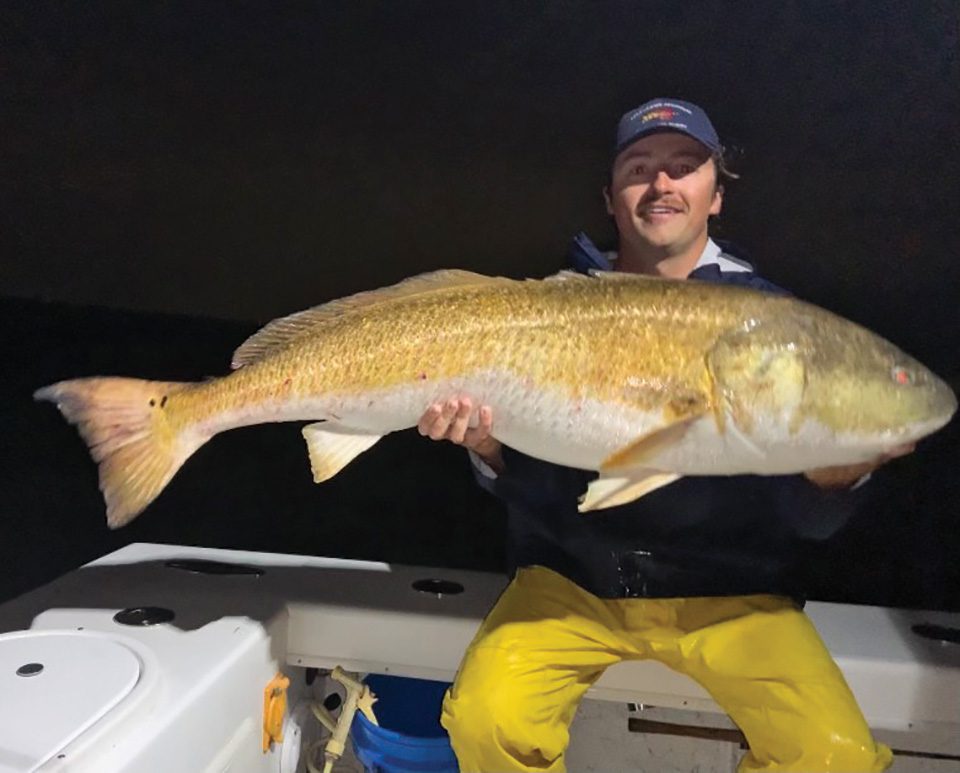For red drum, 50 inches is a benchmark. Bull reds 50 inches and longer are not common, but they definitely occur. Fifty-inchers are caught every year. That’s why Capt. Jack Limroth, of King Tide Charters in Virginia Beach, must know his recently submitted potential IGFA world length record might not stand long.
Limroth caught the massive 127-centimeter (50-inch) drum while fishing the four-day Red Drum Rodeo out of Virginia Beach and the Eastern Shore. He was night fishing with a custom jig. The fish, measured and documented with an official ruler, took the top spot in the tournament’s Open Division for length. It earned Limroth $5,000.
“I have never laid a fish on the IGFA tape longer than this,” he said, “but I am not sure if it is the biggest drum I’ve caught in my entire life, nor if it is the biggest I’ve been on the boat for.”
If Limroth’s IGFA application is approved, the fish will enter the books as 2 centimeters longer than the existing 125-centimeter world length record. The current record was also caught out of Virginia’s Chesapeake Bay, by Vic Gaspeny in 2015.
For comparison’s sake, the all-tackle world record weighed 94 pounds, 2 ounces. It was caught in 1984 out of Avon, North Carolina by David Deuel. It measured 57 inches, with a 38-inch girth, but length was not a consideration in 1984 when Deuel set his IGFA weight record.
With the growing popularity of catch-and-release fishing, and the legal requirement for some species, IGFA began recognizing length records in 2011. Red drum regulations are different from state to state, but every state with red drum fishery on the Atlantic Ocean or the Gulf of Mexico has a slot limit. Virginia’s slot is 18 to 26 inches. Any fish longer or shorter than the slot must be released. Regulations for other states are similar, so it’s likely Deuel’s weight record will stand forever—unless regulations change. It’s tough to get a certified weight without keeping the fish.
These days, the red drum length record is the only game in town, and lower Chesapeake Bay is a good place to chase it.
“Other than a few other places on the East Coast, the lower Chesapeake Bay is one of the only places where you can find massive schools of red drum on the surface of the water ready to eat anything you throw at them,” Limroth said. “For the most part, the season runs from May through the end of September. Depending on the fall, the big bulls will stay around a little bit later.”
Limroth said they can be caught fishing on the bottom with cut bait like crab or bunker. They also come up to feed on top in large schools. When this happens, they will eat anything an angler puts in front of them.
For more information, see kingtidecharter.com.
